This article doesn’t list every traffic strategy under the sun.
Instead, it lists the tactics we use at Ahrefs. These are tactics that have helped us grow our revenue by +65% year over year.
In other words, they’re proven to work.
Here are the tips:
- Target topics with search traffic potential
- Write guest posts
- Promote content in online communities
- Answer questions on Quora
- Appear on podcasts
- Collaborate with other brands
- Rank videos on YouTube
- Update ‘outdated’ content
- Merge similar posts
- Repurpose content on other channels
- Create ‘thought leadership’ content on Medium
This article doesn’t list every traffic strategy under the sun.
Instead, it lists the tactics we use at Ahrefs. These are tactics that have helped us grow our revenue by +65% year over year.
In other words, they’re proven to work.
Here are the tips:
- Target topics with search traffic potential
- Write guest posts
- Promote content in online communities
- Answer questions on Quora
- Appear on podcasts
- Collaborate with other brands
- Rank videos on YouTube
- Update ‘outdated’ content
- Merge similar posts
- Repurpose content on other channels
- Create ‘thought leadership’ content on Medium
1. Target topics with search traffic potential
The Ahrefs blog gets over ~230,000 organic visitors per month:
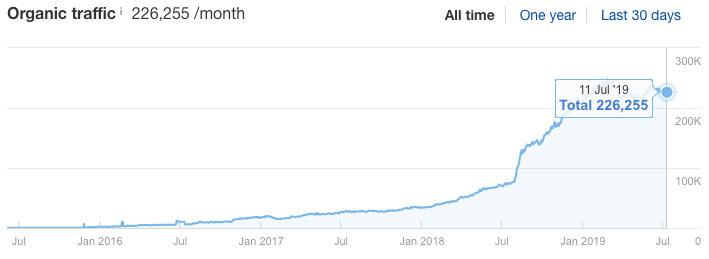
Besides word of mouth, this is our second best marketing channel, sending us hundreds of new users every month.
Without a doubt, search engine optimization (SEO) is one of the best ways to achieve consistent, long-term results. For as long as you rank highly in Google, you’ll be able to generate passive organic traffic to your site.
To do this, you need to write about topics people are searching for. In other words: topics with search traffic potential.
Here are two quick ways to get started.
A. Find high-volume, low-competition keywords
Enter one (or a few) relevant words or phrases into Ahrefs Keywords Explorer, then choose one of the keywords ideas reports to see hundreds or thousands of ideas.

Filter this list by two metrics:
- Search volume—the overall search demand for this keyword, or how many times this keyword is searched for in Google each month, in a specific country;
- Keyword Difficulty—the ranking difficulty of a keyword, represented as a numerical value between zero and a hundred.

This gives you a manageable list of low-competition topics with decent search volumes.
For more ideas, play around with the filters until you get a list you’re satisfied with.
IMPORTANT. Filtering for Keyword Difficulty (KD) only gives a rough sense of difficulty. You should always analyze the search results manually to judge real-world difficulty and search intent before targeting a keyword.
But don’t stop there. Further prioritize your list of topics by focusing on those with high business value (i.e., the topics where your product or service is crucial for solving a particular problem).
In the end, traffic is a vanity metric. There is no point in driving a lot of traffic to your site unless that traffic somehow translates into revenue.
This is the simple scale we use at Ahrefs to determine the business value of topics:
- 3: our product is an irreplaceable solution for the problem;
- 2: our product helps quite a bit, but it’s not essential to solving the problem;
- 1: our product can only be mentioned fleetingly;
- 0: there’s absolutely no way to mention our product.
The very best topics strike a balance between high traffic potential, low competition, and high business value.

B. Use the Content Explorer ‘hack’
Content Explorer is a searchable database of over a billion web pages.
To find low-hanging content ideas that are easy to rank for, search for a broad topic and apply two filters:
- Referring domains < 5
- Organic traffic filter > 1,000
This will give you a list of relevant pages that get lots of organic traffic while having few or no backlinks.

Scroll through these pages and look for topics with business value that make sense to cover.
For example, if we were Beardbrand, we could easily create content about “grey beard styles” and “how to shape and maintain a square beard”.
Learn more about content creation in our step-by-step guide to writing a blog post that ranks.
2. Write guest posts
Guest blogging is a tactic where you write for other blogs. In return, the editor/site owner will usually allow you to link back to your site.
The benefits include:
- More referral traffic;
- More backlinks (which correlate with rankings);
- Increased brand awareness
Here’s an example of a guest post that I recently did for SmartBlogger:
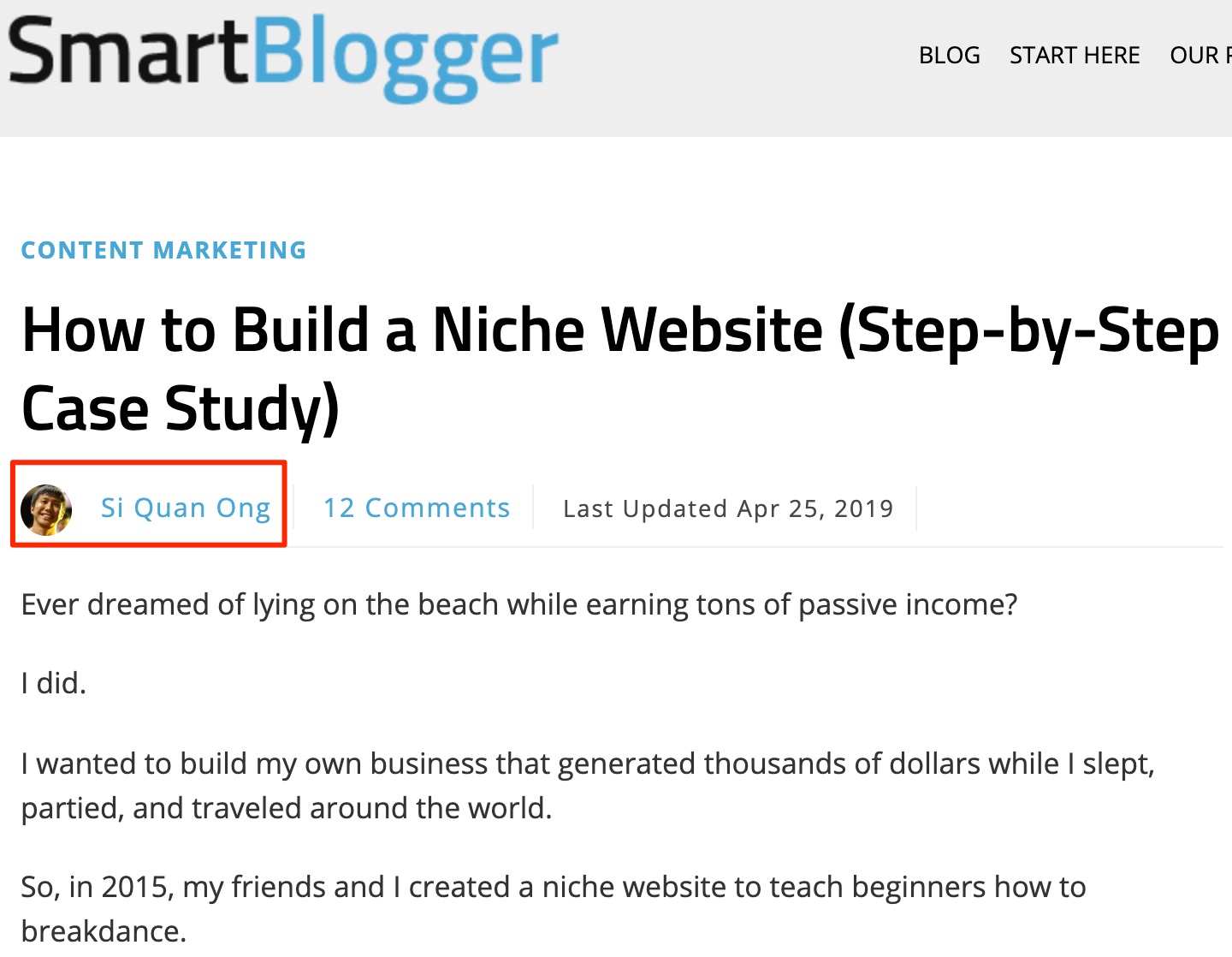
The biggest challenge with guest blogging is finding blogs that are willing to accept your guest posts.
To circumvent this issue, most SEOs use Google search operators to find sites with “write for us” or “become a contributor” pages.
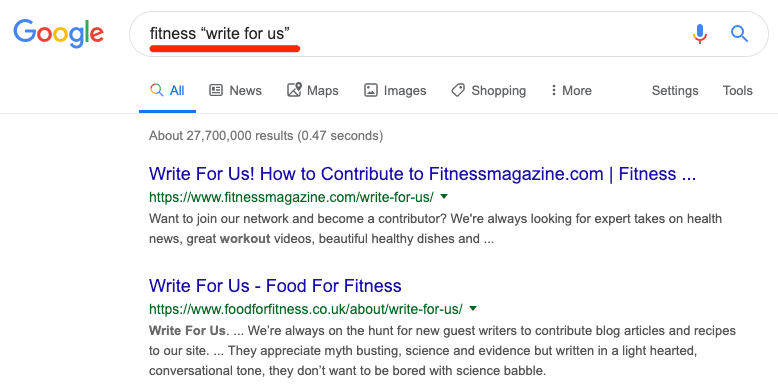
The problem? This is tedious and time-consuming. Plus, if everyone follows the same process, then everyone finds the same opportunities. As a result, editors of these sites often receive more pitches than they can handle and so ignore many of them.
How can you solve this problem? Don’t limit yourself to only sites with a “write for us” page. Most sites are willing to accept guest posts, even if they don’t advertise for it.
After all, who doesn’t want free content?!
If you can find websites that have written about a particular topic before, then chances are they’ll be interested in a guest post about a similar topic.
The easiest way to do this is with Content Explorer.
Enter any word or phrase and then toggle the “one article per domain” switch to make sure you don’t contact the same sites twice.

Voila! 26,000+ potential guest blogging opportunities!
Too many? Use the Domain Rating filter to focus on the caliber of sites that you’re comfortable writing for.

To learn more about guest blogging, read our guide on how to do guest blogging at scale.
PRO TIP
Most people write guest posts solely for links. It often doesn’t matter to them whether the topic of the post is relevant to their blog, or whether the links they build are likely to send referral traffic their way.
I’ve also made this mistake in the past:
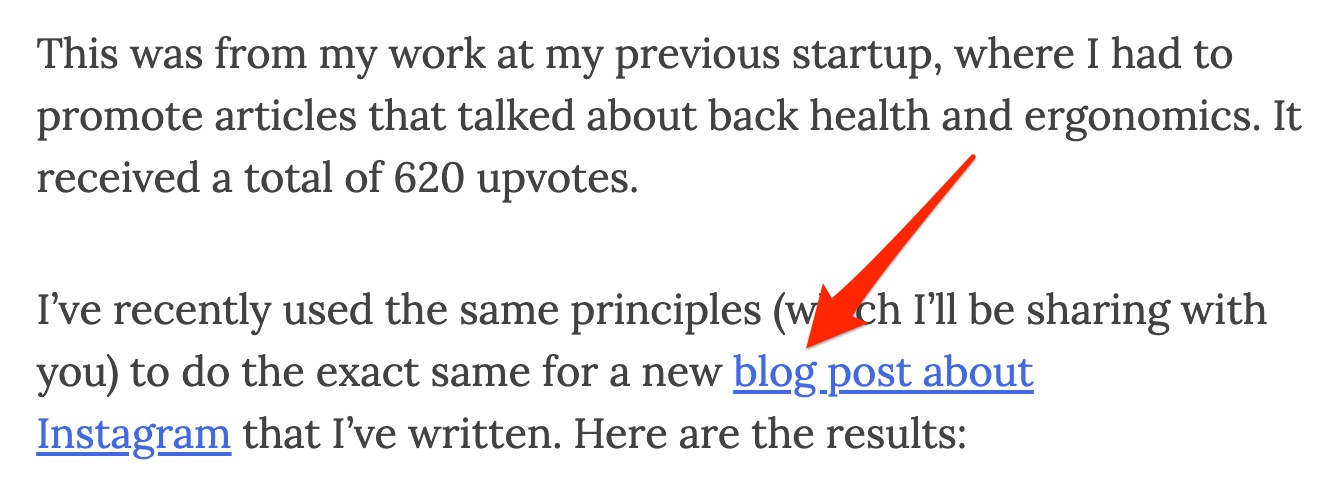
While trying to promote a customer-loyalty SaaS, I wrote a post about Reddit marketing that linked back to a post about Instagram. No business value whatsoever.
Luckily, Tim showed me that to get traffic from your guest posts, you have to write about relevant topics and pitch your product or service in the post itself.
You don’t have to give the hard sell. Just mention your product or service where relevant. In my experience, most site owners allow this as long as it’s not too pushy.
Here’s an example from the SmartBlogger guest post:
3. Promote content in relevant online communities
Relevant online communities are places where your target audience hangs out on the Web.
You can find these communities everywhere:
- Facebook groups;
- Reddit;
- Slack;
- Forums.
Recently, we launched Content Explorer 2.0, which is rebuilt from scratch and has tons of new features.
As part of the launch, I did a few videos for SEO-related Facebook groups, where I explained how to take advantage of these new features.
Judging by the comments, it was pretty well-received.
Sounds easy right?
It is. Just don’t seek out a few Facebook groups and start spamming the heck out of them. There is no quicker and better way to get booted and banned.
What’s missing in this example is the effort required to be active in the group, build trust in the community and cultivate your relationship with the group admin.
Do this, and they’ll be more inclined to say yes on the rare occasion you ask permission to self-promote.
Nathan Collier, the admin of the Facebook group Content Marketing Lounge, says this is the reason why he was able to “turn the other cheek” when I posted something self-promotional in his group:
4. Answer questions on Quora
Quora is a Q&A site where anyone can ask questions or answer them.
That means you can respond to existing questions in your niche, establish your authority, and generate some traffic for your website along the way.
Since July 2018, I’ve been active on Quora, answering at least 5 questions a week on topics related to Ahrefs, SEO and digital marketing. Since then, we’ve accumulated hundreds of thousands of views.
But, Quora views are a vanity metric. The real question is: does it send traffic and sales to your website?
Short answer: yes.
We’ve been getting consistent sign-ups from Quora every month (and that’s from people who have indicated they knew us from Quora):
So, how do you market on Quora?
There are two parts to this equation:
A. Finding the right questions
Searching for good questions is essential. That’s because Quora is a user-generated site, which means that thousands (if not millions) of people ask questions each day.
Pareto’s Principle suggests that only ~20% of these questions will actually send you traffic.
To find these questions easily, enter quora.com into Site Explorer, and navigate to the “Top pages” report.
This report shows you the pages on Quora that receive the most search traffic.
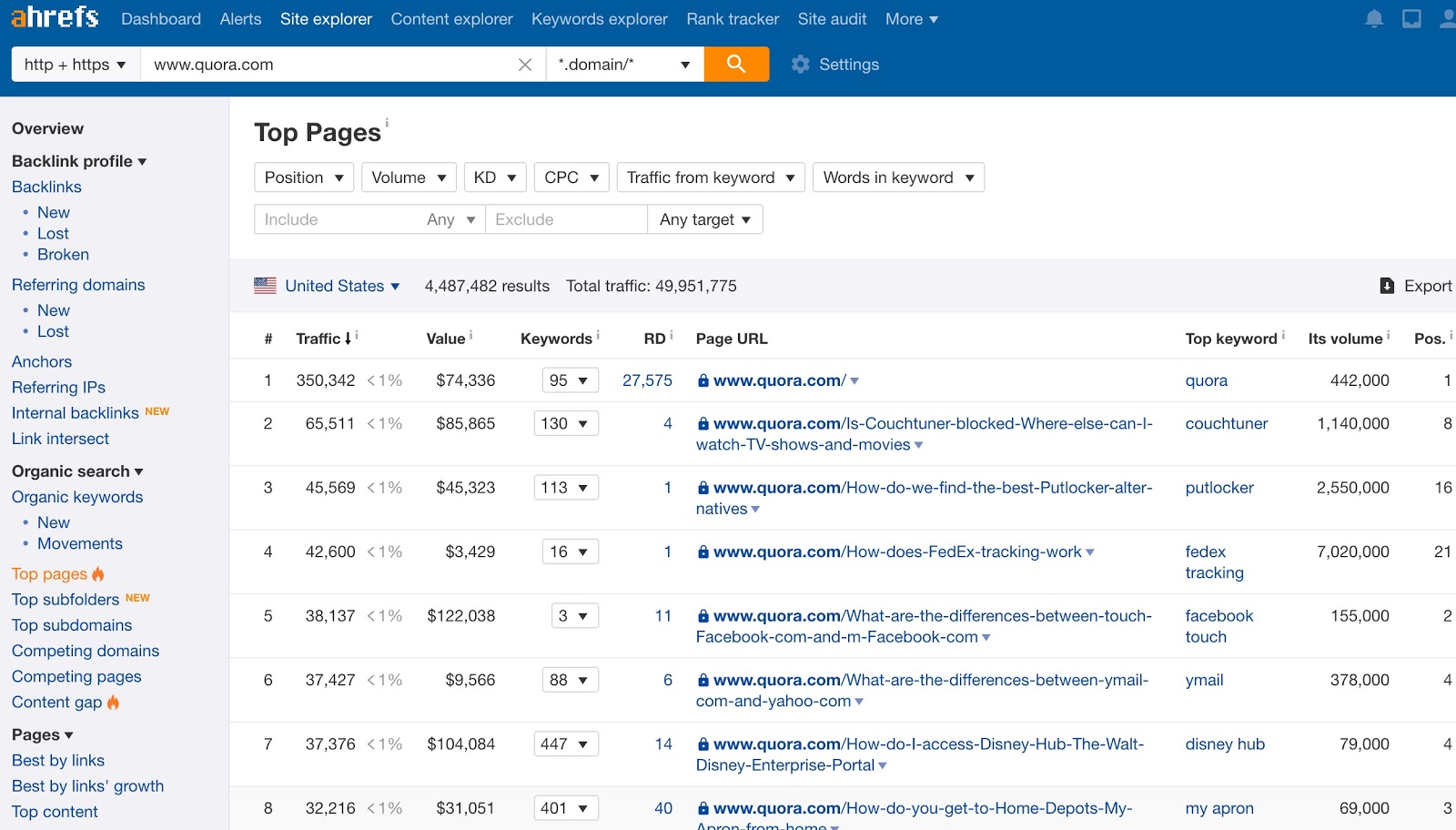
That means: any answer you write here will also show up on Google, thereby sending you more referral traffic!
In the “Include” box, enter a relevant word or phrase to find suitable questions to answer.
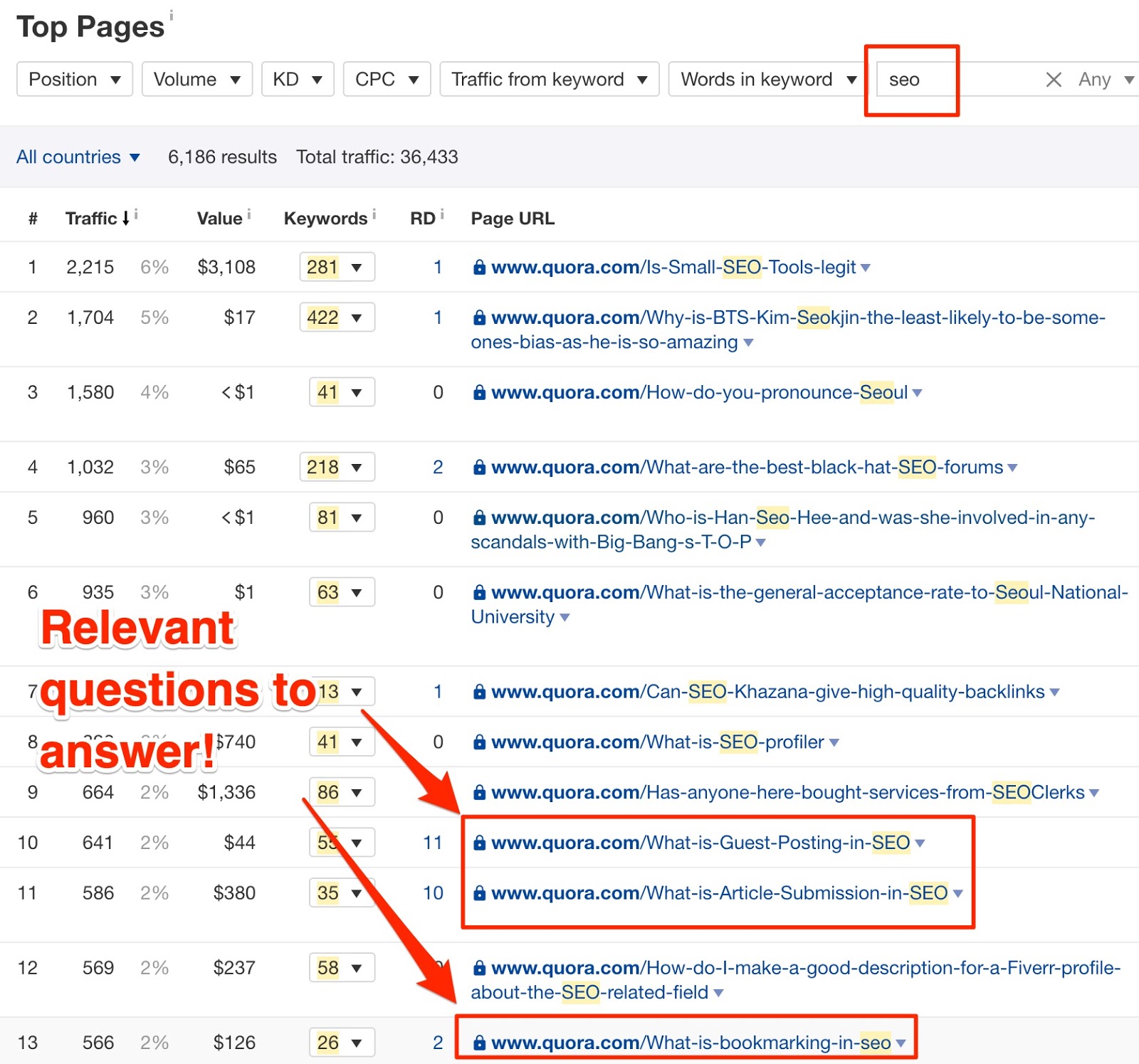
Another strategy you can use is the Quora Ads ‘hack’.
If you set up an Ads account, select “Questions Targeting,” and then enter a relevant keyword, Quora will suggest questions to answer and show the number of weekly views.
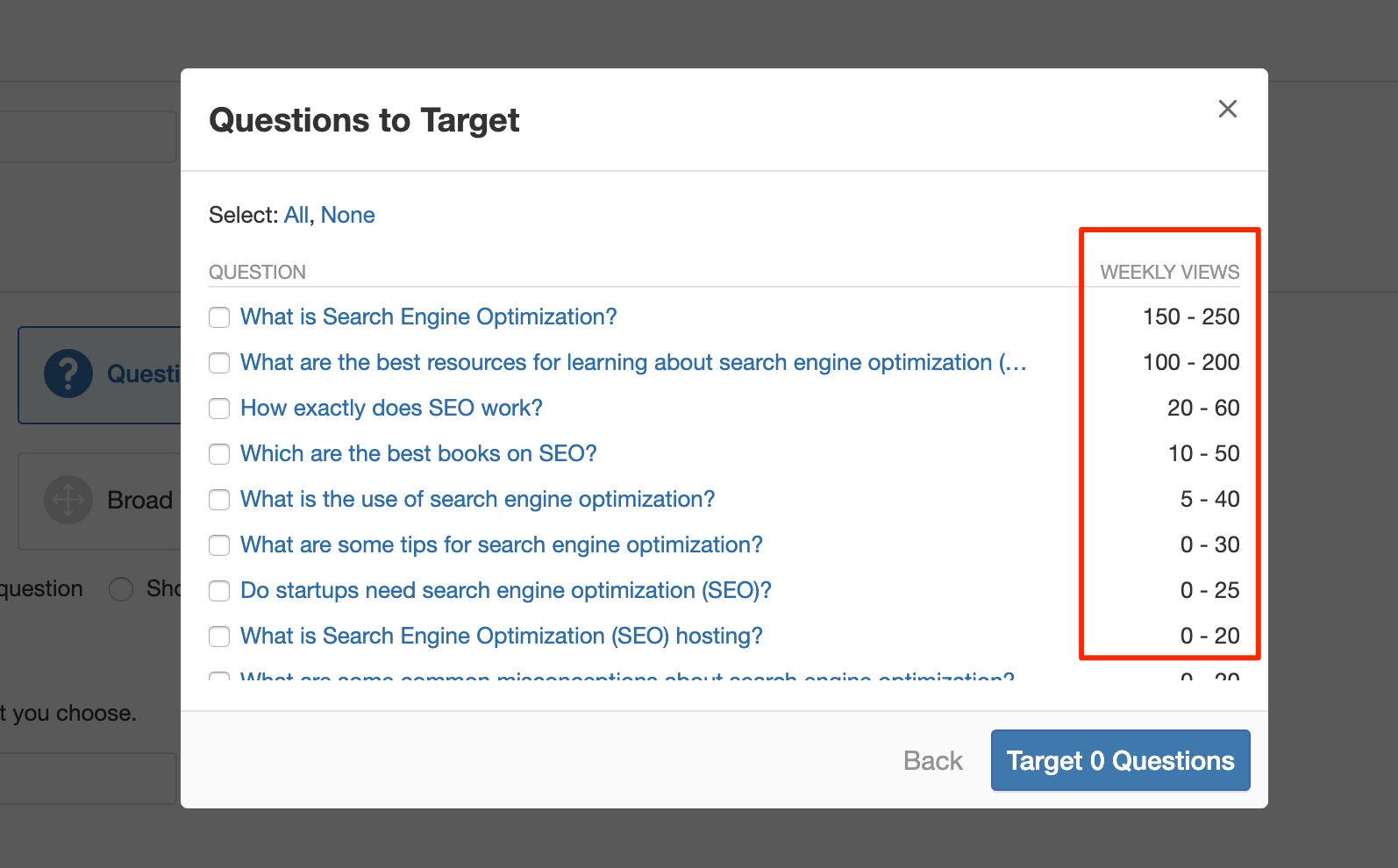
B. Answering questions well
There is no secret to writing good answers on Quora.
Good answers = good copywriting.
If you want somebody to read your answer, be glued to its story and then click upvote or share, you have to craft compelling copy.
Fortunately, there are copywriting formulas that make this easier, one of which is the AIDA formula.
Attention: Capture their attention with something catchy or relevant.
Interest: Tell them interesting facts, uses, examples, or stories.
Desire: Make them desire the product/service/etc.
Action: Get them to take action.
Here’s how I used it:
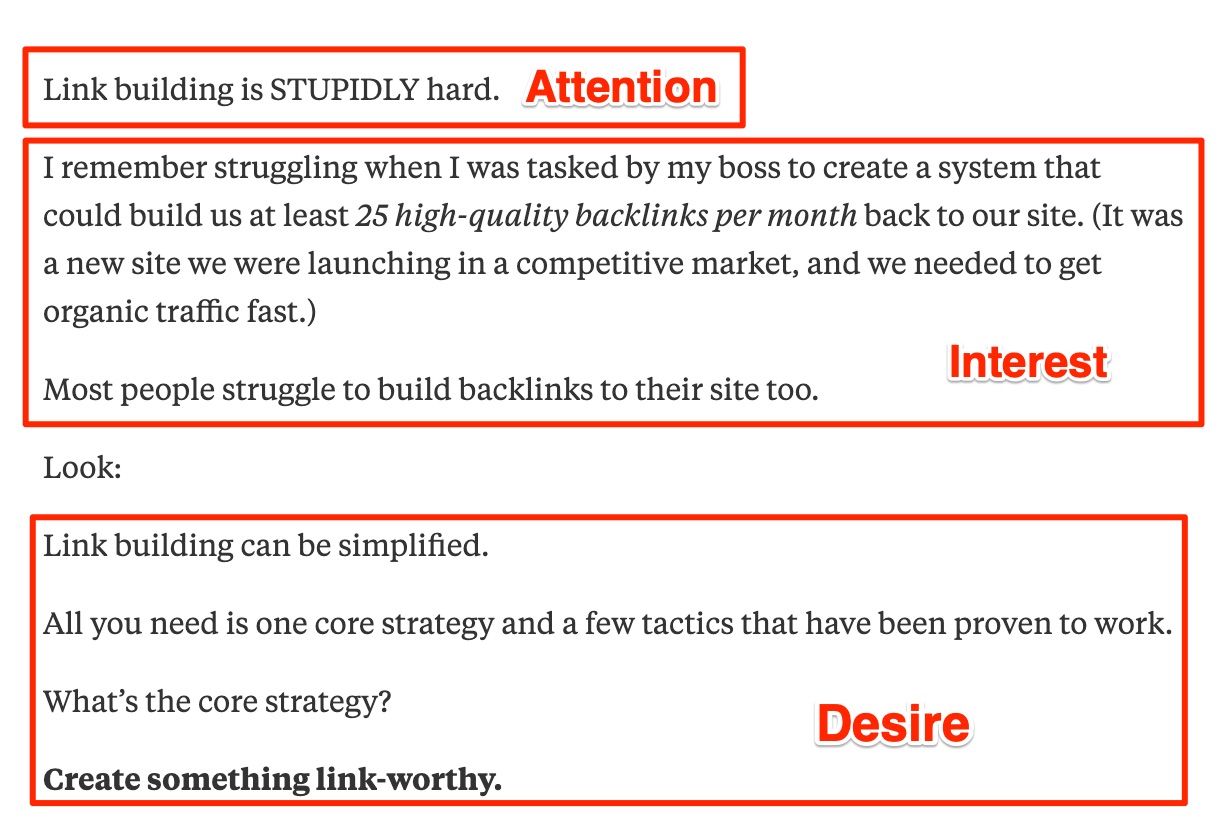
Source: https://www.quora.com/Whats-the-best-way-to-get-backlinks/answer/Si-Quan-Ong‑2
Here’s a guide that explains more about the AIDA formula.
Some other tips for a good Quora answer:
- Provide value. Quora moderators will not hesitate to remove your response (or ban you) if they think you’re only there to siphon traffic to your site. They’re happy for you to link elsewhere, as long as you genuinely provide value.
- Include images. Images help capture attention as a user is scrolling through their Quora feed.
- Tell a story. Most Quora answers are dull and very matter-of-fact. Telling stories helps to engage the reader.
PRO TIP
Another way to get your answers seen by many is to connect with the owners of “Spaces,” which are Quora’s answer to Facebook groups. They allow Quorans to form communities and curate content.
For example, JD Prater shared one of my answers in his Digital Marketing News and Trends space. As a result, I got hundreds of upvotes and thousands of views:
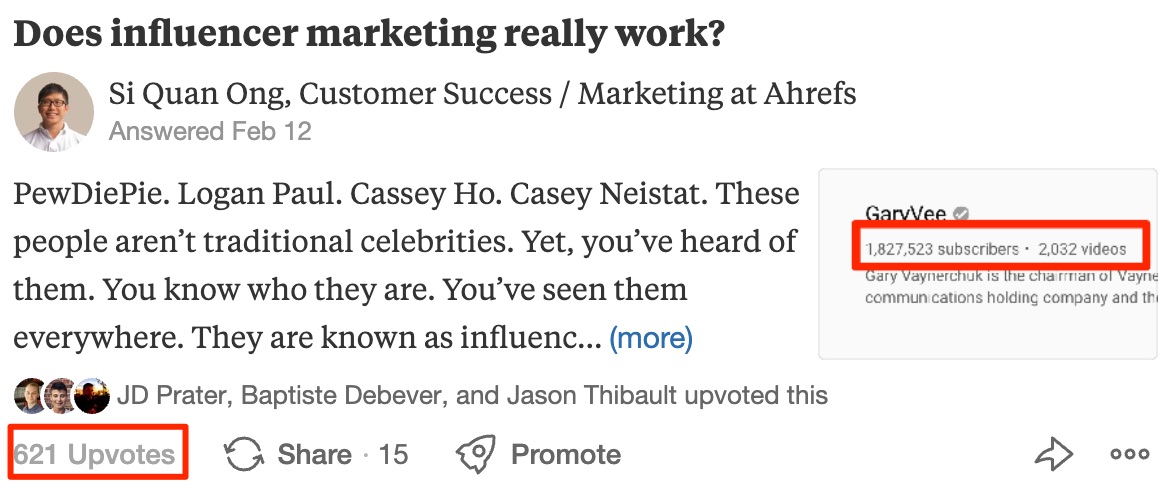
Learn how to market successfully on Quora in our complete guide to Quora marketing.
5. Appear on podcasts
44% of the US population have listened to a podcast.
Because of that, podcasts have become one of the hottest marketing channels. Brands like Drift are flocking to the podcast game and creating versions of their own.
But creating a podcast is tedious work. You’ll need equipment, editing skills, guests, etc. And if you have limited resources, it doesn’t seem like a good idea to dive right into setting one up.
Think about it another way.
Plenty of podcasts means they need guests. Pitch to be that guest!
Tim, our Chief Marketing Officer, has appeared on numerous podcasts this year. From a relatively-newish podcast to a top 100 business podcast, he has done it all.
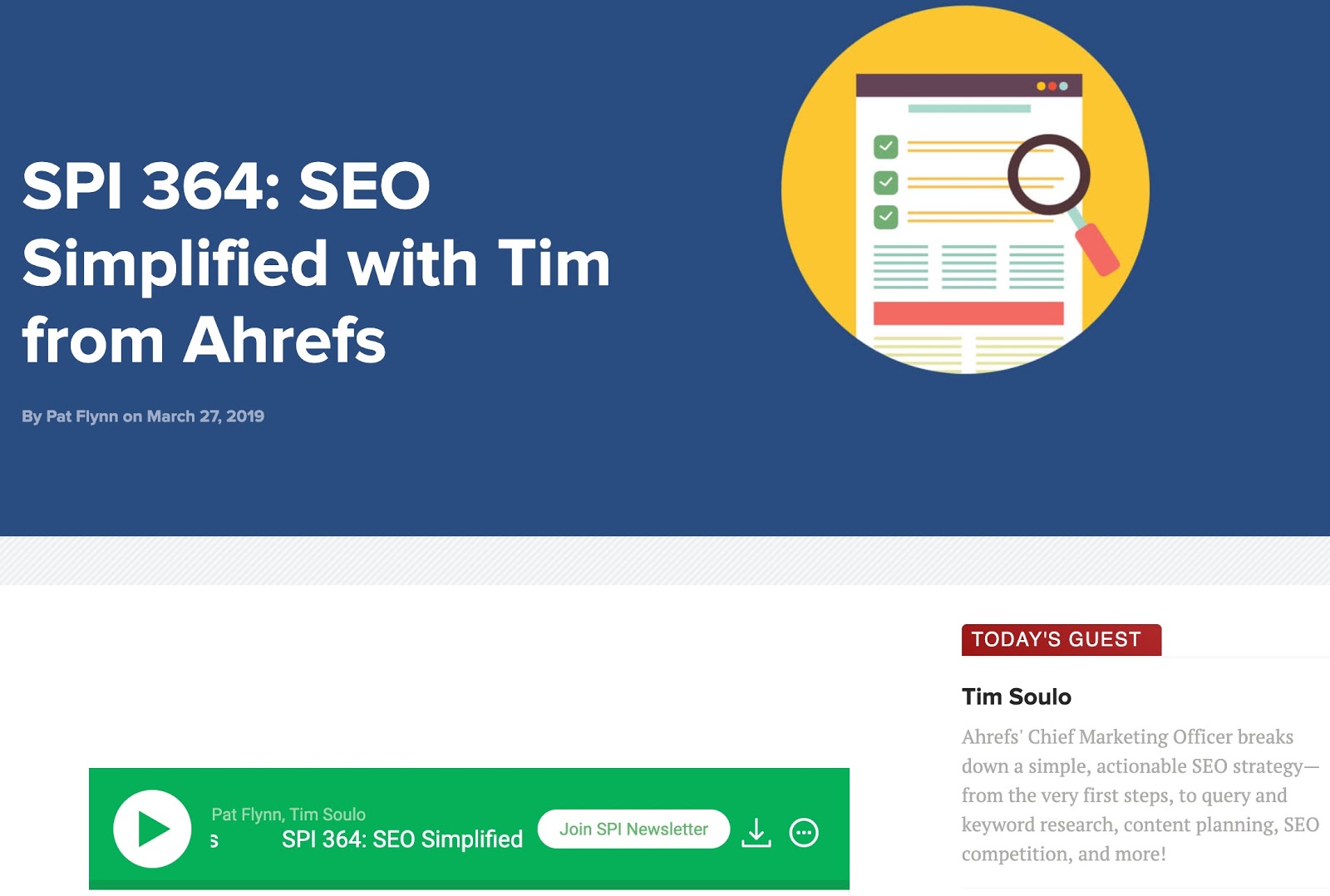
And that has helped us acquire hundreds of customers:
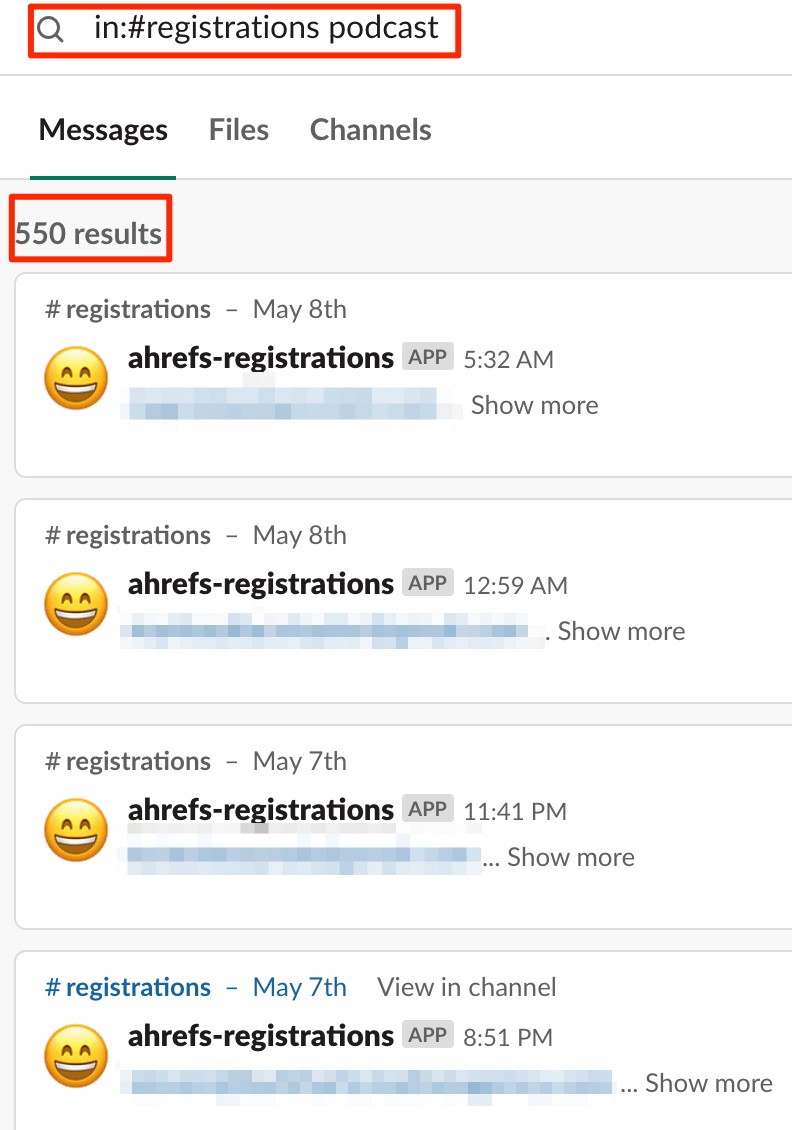
How can you find podcast opportunities?
Of course, the easiest way is to use Google. Search for “top [your niche] podcasts”, and you’ll get tons of curated lists:
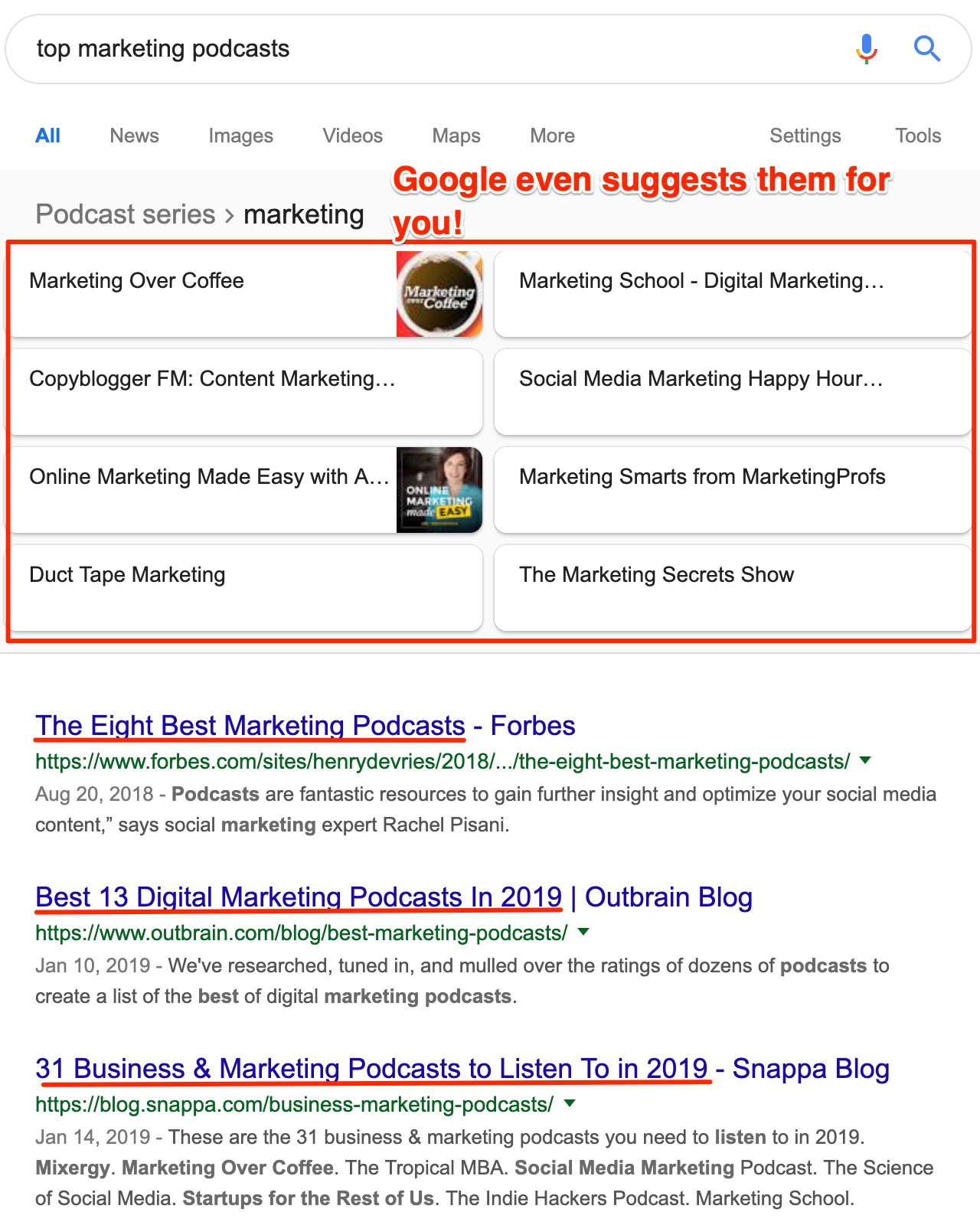
You can also use Site Explorer. First, identify the name of someone in your industry who’s been a guest on many podcasts.
For example, Laura Roeder is known for growing MeetEdgar via podcast appearances.
Then, go to Site Explorer > Enter the person’s website > Backlinks > search for their name in the title of referring pages (e.g., “Laura Roeder”)

This will surface the podcasts the person has appeared on.
Find the host and pitch yourself as a guest!
Want to do this at scale? Here’s Tim’s article on how he turned podcast appearances into a repeatable, scalable process.
6. Collaborate with other brands to tap into their audiences
For most businesses, there are plenty of non-competing brands with the same or similar target audience.
So why not work together to cross-promote to each others audiences?
That’s what we did recently.
We arranged a joint webinar with Buffer, a social media scheduling tool. The topic: How to Build Your Website Traffic with Evergreen Content and Social Media.

We both promoted heavily on social media leading up to the day of the webinar. Post-webinar, Buffer created a blog post summarizing the presentation.
On our end, we posted the recording on YouTube and uploaded the presentation slides on Slideshare.
Since then, the recording has generated 4,500+ more views:

Not bad!
Takeaway: look for opportunities to partner with brands that solve different problems for a similar audience.
That way, you can each gain access to an entirely new user base (without stealing each other’s customers!)
7. Rank videos on YouTube
Check out these rave reviews for Sam Oh, our YouTube god:

His hustle has helped grow the Ahrefs YouTube channel to over 130,000 subscribers and more than 6 million views.
Not only that, he has managed to rank our videos on YouTube for some of the most sought-after keywords.

And this happened despite us having a smaller audience when compared to our top competitors.
Google search can be quite competitive when it comes to specific key phrases. But in YouTube SEO, everyone has an equal opportunity to entertain, engage, and rank.
How?
While keywords and search intent are important, the key component to YouTube SEO is high engagement.
I’m talking about metrics such as likes/dislikes, clickthrough-rate (CTR), average watch time, etc.
YouTube wants viewers to stay on its platform for as long as possible. That helps them make more ad dollars.
And to reward you, they’ll give you visibility.
Here’s a simplified process for making videos that rank:
- Do keyword research. If you don’t target topics with search volume, then you won’t get search traffic. To get these numbers, you can use our YouTube Keyword Tool (part of Keywords Explorer), or pair YouTube Suggest with Google Trends to estimate popularity.
- Identify search intent. Search intent is the reason why someone searches for a query. To figure out search intent, enter your target keyword into YouTube, and see what the top 3–5 results are talking about.
- Create a high-engagement video that satisfies search intent. Unless you’re GaryVee, you’ll have to script your videos. Plan the stories you’re going to tell, the hook you’re going to use and the content you’re about to present. Then, strategically edit your videos to make them entertaining and engaging (hint: this is why movies are so good at capturing your attention; it’s all about the editing!)
- On-page video optimization. YouTube on-page SEO = title, description, tags and thumbnail. To get this down, include your target keyword and make the thumbnail eye-catching.
- Publish & promote. The first 24–48 hours from publishing is the critical period. Ideally, you should publish at the “best time” (check your YouTube analytics), respond to all comments and promote it heavily (send a newsletter, post it on social media, add video embeds, etc.)
Read our full guide to YouTube SEO to learn more about how to do this.
8. Update “outdated” content
We recently updated our article on outsourcing writers, and it went from ranking for nothing to ranking #1 for its target keyword.

We also updated our post on anchor text, after which there was a massive uptick in traffic to the post:
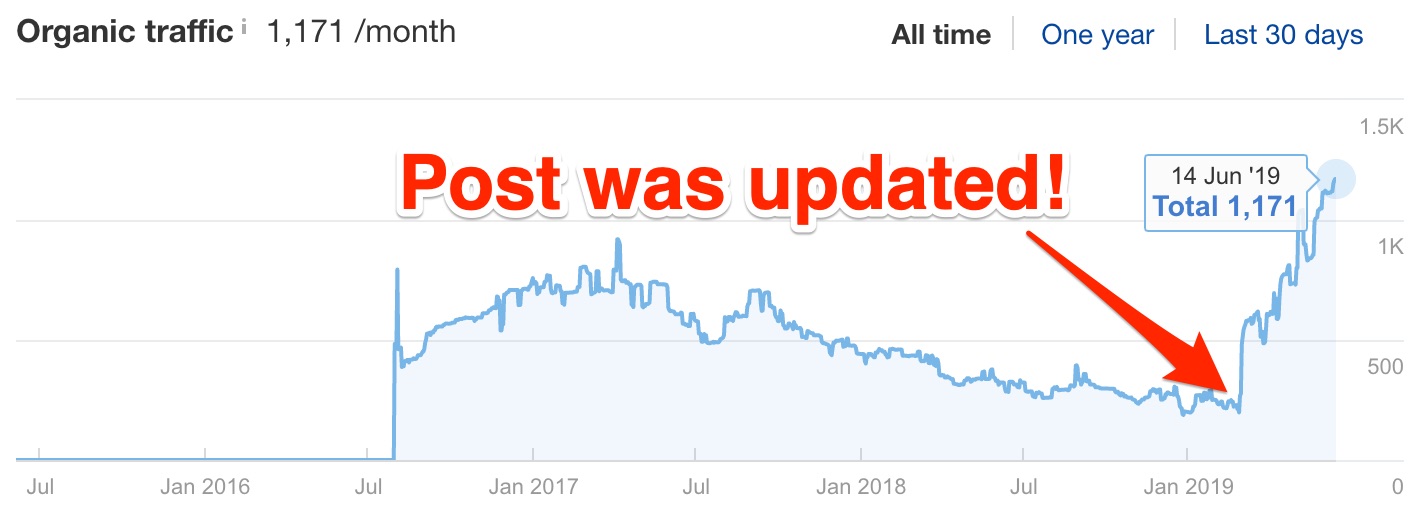
This is now a core part of our strategy here at Ahrefs.
We pinpoint articles that are no longer evergreen (in the eyes of Google), and we refresh and republish the content.
As you can see, SEO is not a set-it-and-forget-it task. Even if you’re already ranking well for your target keyword, competitors may try to “steal” the top spot. Google may also “demote” your rankings if your content becomes outdated.
So you need to keep your content fresh and up-to-date to maintain your rankings.
To find the pages with decreasing traffic, look at your Google Analytics. Alternatively, paste each of your pages into Ahrefs’ Site Explorer and look at the organic traffic graph in the Overview report.
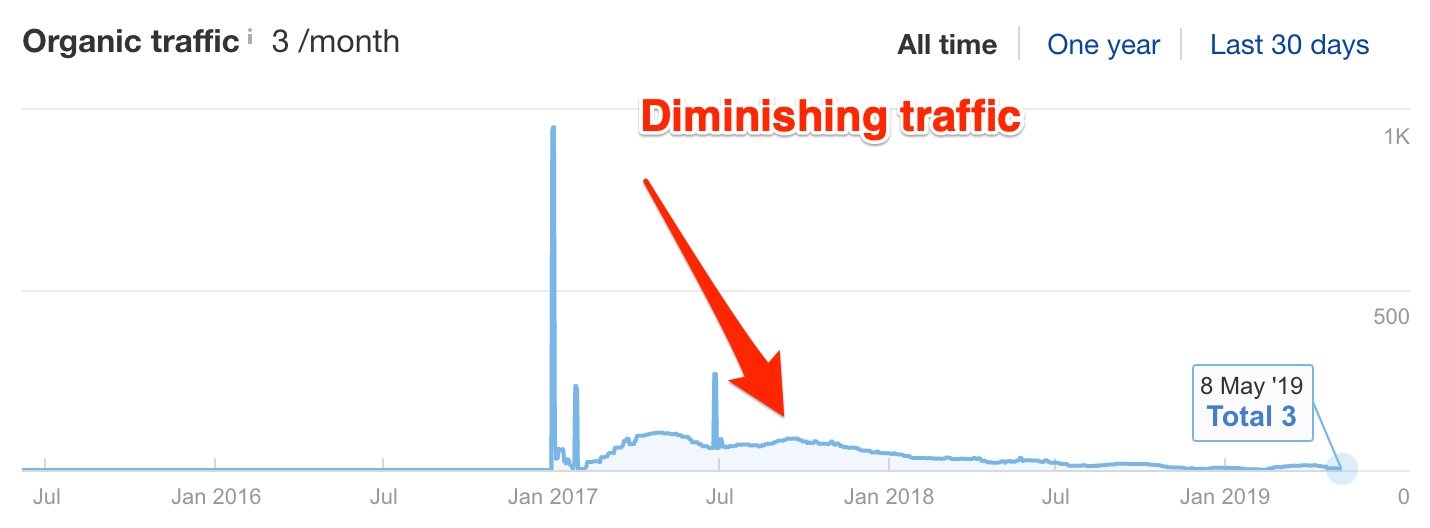
Looks like it’s time for us to update this post!
To find out why your rankings have dropped, look at the search results to see what the top-ranking posts have that you don’t. Often, ranking drops occur because certain parts of your content are outdated. For example:
- Screenshots;
- Process;
- Stats;
- Links (broken, etc.)
- Year in title.
Depending on the target keyword, sometimes refreshing the outdated sections will suffice. In other cases, you might find that you’ll have to do a full rewrite of the article (which is what we most often do here at Ahrefs!)
Learn more about keeping your content evergreen in our guide to evergreen content.
9. Merge similar posts
Here’s something meta.
This post you’re reading was originally two other posts, with these URLs:
- ahrefs.com/blog/how-to-drive-traffic-to-your-website/
- ahrefs.com/blog/increase-website-traffic/
Both of them had backlinks.
The problem? None of them were getting much search traffic.

So, we decided to merge them into one post.
We call this the Cocktail Technique.
By merging and consolidating both posts into one delicious cocktail of a page, it is likely to perform way better in the SERPs.
That’s what happened when we merged two articles about the Skyscraper Technique on our blog:

Why does this work?
Two reasons:
- Consolidation of “authority.” 301 redirects no longer “leak” PageRank. By redirecting one article to the other, we were able to merge the “authority” of both pages into one.
- Better content. The merged articles were decent (not great). And they were getting outdated. By combining the content into one post, we created a substantially better piece of content that deserves more traffic.
Want to learn how to execute the Cocktail Technique? Read our guide to 301 redirects.
10. Repurpose content on other channels
Here’s our post on performing a content audit. And here’s our video on the same topic:
By repurposing our article into a video and uploading it on YouTube, we’ve acquired >10,000 extra views.
Pretty good!
But that’s just one example. Here’s another:
We republished our post on podcast advertising on Medium, which landed the #2 spot on Medium’s “Most Popular” list on that day.

We’ve also converted some of our beautiful infographics into tweets:
800+ likes and 500+ retweets. Pretty successful, I’d say!
Think about it: if you’ve spent lots of time and effort creating a piece of content, don’t neglect it right after you hit “publish.”
Extend its shelf life. Turn it into different formats. After all, people consume content differently: some prefer video, some prefer audio, and some, like me, prefer to read.
A good mental model for this is the content pyramid used by Gary Vaynerchuk.
 Here’s the slide deck that explains his process.
Here’s the slide deck that explains his process.
SIDENOTE.
GaryVee has a huge team that helps him accomplish this much content repurposing. That doesn’t mean you can’t do it. It just means you need to calibrate your expectations.
11. Create “thought leadership” content on Medium
At Ahrefs, we have a general “rule”:
Only write about topics with search traffic potential and business potential.
The reason: we want every article to generate consistent traffic for years after we publish, and we want to convert that traffic into paying customers.
We want to avoid the “flatline of nope”—where we have to keep publishing just to sustain traffic to our blog.

The diminishing results of publishing blog posts that have no search traffic potential
But this ruthless prioritization has one drawback. We sometimes dump great content ideas because they don’t have any search potential.
Usually, these are opinion pieces or content about how we do things (differently) at Ahrefs.
Enter: Medium.
Medium is a user-generated site that prioritizes great content. The beauty of Medium is the recommendation engine, which suggests articles based on their users’ reading habits.
This algorithm allows topics with no search potential to be found by their readers. Plus, Medium Staff Editors spend their days handpicking great content to feature.
Translation: Medium is a place where we can write about these abandoned ideas and still generate traffic.
Since the start of this year, Tim has published a few articles on Medium.
Here are his stats:

Those are some fantastic numbers!
Here’s our current strategy:
- Publish posts with search traffic potential on the Ahrefs blog;
- Publish posts on topics without search potential on Medium.




















Facebook Conversations
Disqus Conversations